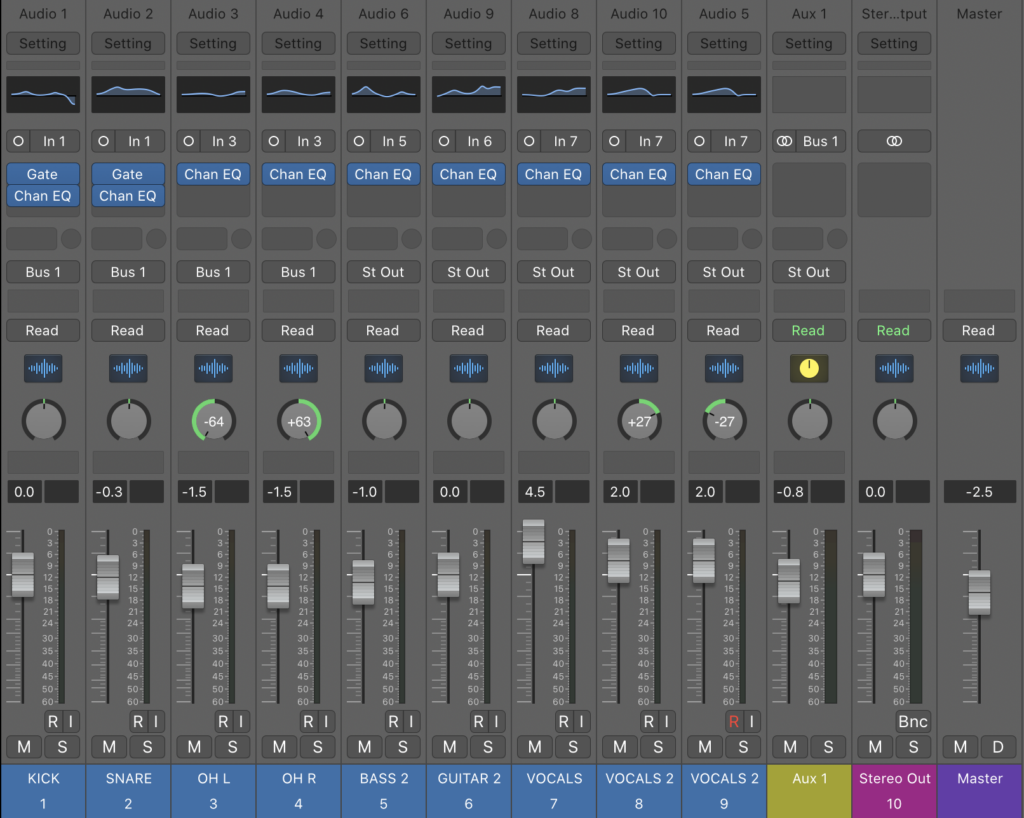Before
Some things I wanted to change were the noise and voices picked up in different recordings and softening harsh dynamic changes in drums and vocals. The levels, to me, were off completely as the vocals didn’t particularly stand out and the bass and guitar weren’t balanced as they should have been.
During
I hadn’t cut out noise at this point or edited my EQ to enhance crucial parts. I also didn’t have any compression yet so parts are harsh and stand out too much. I had adjusted levels and applied EQ with some experimentation and applied panning to the overhead drum tracks.
After
The final product sounds more compressed and organised in comparison to the pre-mix version. This is because I cut out all noise from the silence in the vocal recordings.
I used a noise gate on the kick and snare to isolate each and boosted both with EQ to enhance the bass in the kick and the harsh, bright tones in the snare. I tried using EQ for every track, listening closely to differences and testing my progress by turning the EQ off and on and playing the whole song as one to hear the difference.
I panned the overhead mics on the drum kit to create depth and doubled up backing vocals to do the same.
For the guitar, I boosted the higher frequencies to bring out the crunchy tone, cut some middle frequencies to reduce the muddy feeling and raised the bass slightly. As the bass also sounded fuzzy, I brought up the lower frequencies and a very small section of higher frequencies to enhance the fuzz.
Afternoon Lesson
I learnt how compression works properly and how different types of compression can do different things. I had practice with cutting out noise and panning and applied my research into how panning is used to this. I experimented with EQ with more instruments and developed a better understanding of frequency ranges, particularly with heavier guitar tones where raising the higher frequency makes it sound more gritty.
I decided to duplicate both backing vocals and the guitar so I could pan them equally and give them more depth to make them feel less flat. Because of this, all effects have to be the same on every duplicated track so everything is equal.

Certain sections of the tracks benefitted from being cut completely as there was a lot of noise in the background because of the way the vocals were recorded and the amp feedback. Cutting anything from the drum tracks was unnecessary and risked parts sounding harshly muted, particularly during the pauses where symbols ring out.

This was the result of the afternoon class work. I’m pleased with my ability to use EQ and my application of panning, but I think I could use some practice with properly balancing levels.